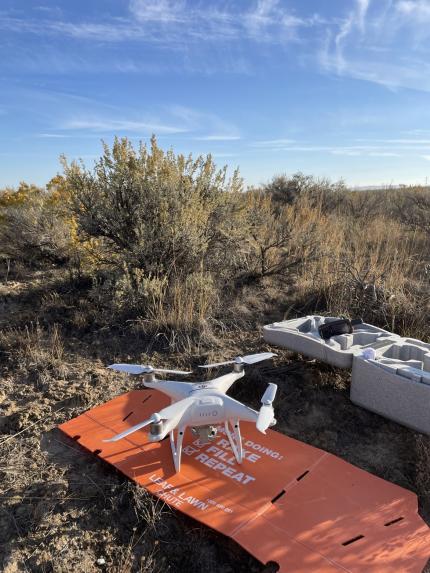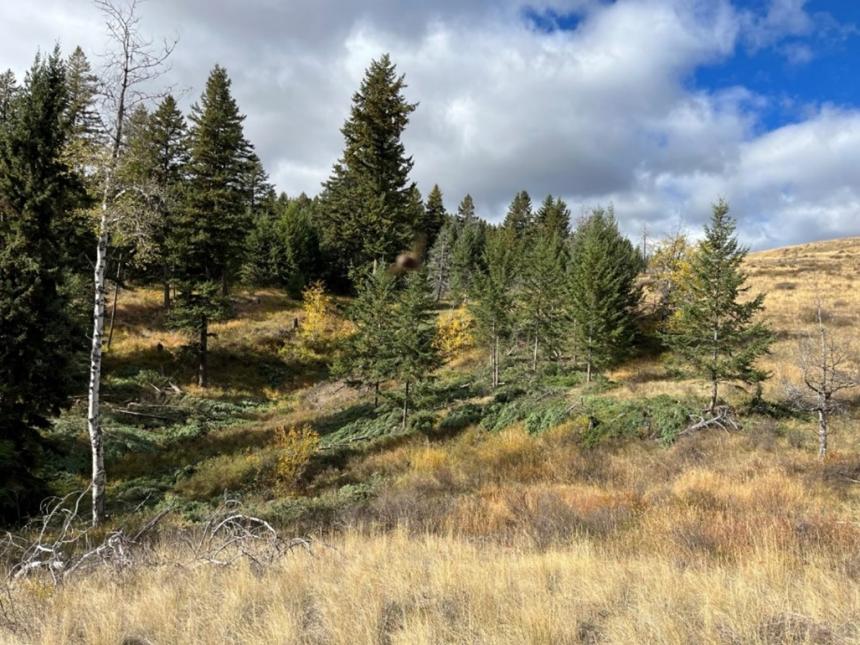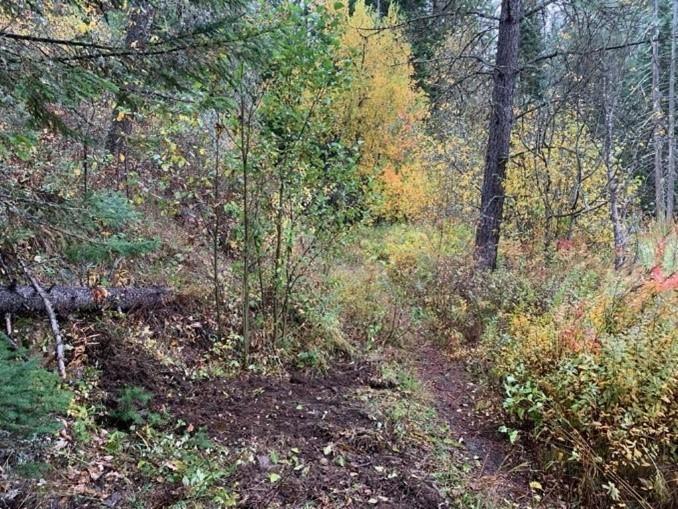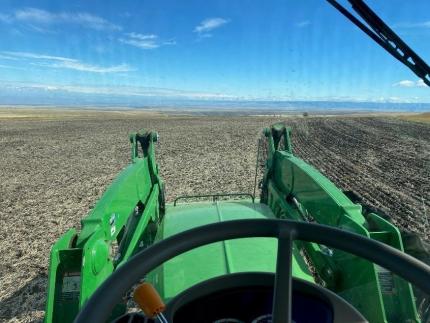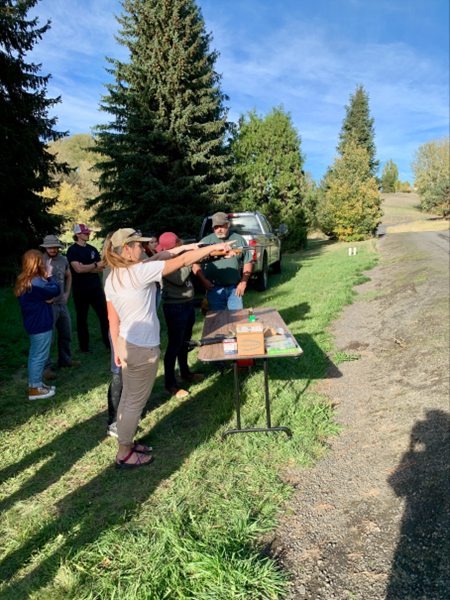Biweekly report Oct1-15 2024 - Region 1 (Eastern)
Managing Wildlife Populations
Free Help: A red fox conducted courtesy gopher patrols at the Walla Walla Washington Department of Fish and Wildlife (WDFW) District Office.
Chronic Wasting Disease (CWD) Operations: Natural Resource Technician Moberg collected seven CWD samples in District 3: four samples from deer and elk brought to taxidermists, one from a harvested deer at the Walla Walla District Office, and two from road killed deer at a Department of Transportation pit. Moberg also provided the contact information of all Washington State Department of Agriculture licensed food processors and WDFW licensed taxidermists in District 3 to staff members that may interact with hunters and can refer out-of-region hunters to these license holders to easily comply with the Washington Administrative Code (WAC).
Moberg rounded up samples from the Walla Walla District Office and the Wooten Wildlife Area Office and brought them to the Clarkston District Office so that the samples can be transported to Spokane early next week.
CWD: Regional Private Lands staff organized their CWD sampling supplies and assisted with setup of check stations for the modern firearm deer season opener next weekend.
Chronic Waste Disease (CWD) Sampling: This week Wildlife Area Assistant Manager Wagner was told of a recent harvested doe in Game Management Unit (GMU) 136. After taking the head, he showed Natural Resource Technician Duclos how to harvest the lymph nodes for CWD sampling.
Chronic Wasting Disease: Wildlife Area Manager Dingman collected a sample from a roadkill deer on Patit Road. Dingman and Natural Resource Technician Jensen sampled hunter harvested deer at the Last Resort, but lymph nodes were only found in one of the two deer. Natural Resource Technician Tritt sampled a hunter harvested deer at the Last Resort. Dingman and Tritt participated in the CWD Check Station meeting on Teams. Tritt hung CWD flyers in U.S. Forest Service campgrounds south of Pomeroy, the Pomeroy grocery store, and at Pioneer Park and Blue Mountain Base Camp outside of Dayton.
Chronic Wasting Disease (CWD) Operations: Natural Resource Technician Moberg collected 14 CWD samples from deer in District. Twelve samples from deer brought to taxidermists and two from road killed deer. Moberg worked the Walla Walla Hunter Check Station opening weekend of modern firearm season with District Biologist Vekasy, where they collected 13 samples from harvested mule deer and white-tailed deer. Moberg coordinated with Chronic Wasting Disease Surveillance Coordinator Westacott to gather all the necessary check station supplies from Spokane and get them down to Walla Walla.
Wildlife Conflict Specialist Harris spent two days at a CWD Check Station in GMU 124. Staff and volunteer members collected a total of 25 samples from white-tailed deer, mule deer, and moose harvested in 100 series GMUs.
While in the area, Supervisor Earl and Conflict Specialist Wade collected a sample from a hunter camped at Field Springs State Park.
Stream Surveys: Natural Resource Technician Moberg and District Biologist Vekasy spent two consecutive days conducting rocky mountain tailed frog environmental DNA (eDNA) stream surveys in the Wenaha-Tucannon Wilderness. Seven remote streams were sampled, and fun was had by all.
CWD: Regional private lands staff assisted with CWD sample collection by working at established check stations around the region and contacting hunters on private and public lands throughout the region. At least 67 samples were collected with the help of private lands staff members.
Providing Recreation Opportunities
Hunter Access Program: Regional private lands staff members responded to dozens of inquiries from hunters seeking deer, moose, upland bird, and waterfowl hunting opportunity and information about chronic wasting disease.
Access Contracts/Teamwork: Private Lands Biologist Thorne Hadley and Natural Resource Technician Moberg worked with Contracts Specialist Cole to submit obtained signatures for amended Voluntary Public Access Program contracts. Private Lands Biologist Thorne Hadley reached out to several landowners to explain the reasoning for the reduced monetary values of the contracts from the previous year.
Private Lands Biologist Thorne Hadley contacted a landowner to renew a Hunting by Written Permission access property for five years. A new contract was written and submitted for review.
Providing Conflict Prevention and Education
Wolf: Natural Resource Technician Edmondson accompanied Wildlife Conflict Specialist Samsill and Natural Resource Technician Keeling on a wolf depredation investigation in the Onion Creek Pack territory. After the investigation was completed, Edmondson attended the after-action review for the investigation to finalize the determination.
Moose Complaint: Wildlife Conflict Specialist Harris spoke with a landowner in Spokane County that reported problem moose on their property. Harris provided the landowner with advice for hazing the moose. Harris also coordinated with Private Lands Biologist Nizer and Officer Silver on a group of problem moose in northern Whitman County.
Bald eagle: Natural Resource Technician Edmondson and Keeling responded to a call regarding an injured “hawk” from the previous night. Upon arriving on scene, they realized that the bird was a juvenile bald eagle and had passed away overnight. The carcass was removed and brought back to the Colville office.
Conserving Natural Landscapes
Z-Lake Aeration Maintenance: This week, Wildlife Area Manager Finch mailed two air compressors that were not functioning from the aeration system to see if they could be repaired. If they cannot be repaired, they will be replaced with a new one. Wildlife Area Assistant Manager Wager and Natural Resource Technician Duclos modified the air compressor box to make sure it stays dust free and is ventilated properly when it is running. Duclos also vacuumed out the storage container. Wagner and Duclos raised the vent pipes on each end from 12” to 6’ tall just to make sure no dust or dirt is blown in the air vents. Also, this week Finch received word back from an expert after their inspection on the two compressors that Finch sent to them. The newest compressor can and will be rebuilt. The older compressor is not repairable; therefore, Finch ordered a new compressor for a backup. Finch is expected to receive both compressors within two weeks and the final repairs will be completed then.
Prescribed Burning: WDFW’s Prescribed Burn Unit prepared fire lines and burned three small fields near the Sherman Creek Wildlife Area headquarters, about 25 acres in total. They had more acreage planned, but dry conditions did not allow any further burning in treed areas. A prescribed burn was also planned at Rustlers Gulch Wildlife Area, but it too had to be postponed due to dry conditions. The burning plans for both wildlife areas were made earlier, and it’s now just a matter of getting the humidity and amount of moisture in the soil and vegetation, plus wind conditions, just right.
Pheasants Forever: Natural Resource Technician Nance cleared brush around planted trees on a Feel Free to Hunt property. The trees were planted earlier this spring in partnership with Pheasants Forever to promote ring-necked pheasant habitat.
Conducting Business Operations and Policy
New Swanson Lakes Sign Installation: This week staff from the Capital and Asset Management Program from the Yakima shop were out to install the newly replaced Swanson Lakes Wildlife Area entry sign at the end of the lane. This sign replaces the wooden sign you see at most wildlife areas and regional offices. Swanson Lakes staff members decided to put gravel at the base of the sign to better prevent fire damage to the sign when the next wildfire occurs

















































